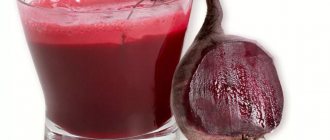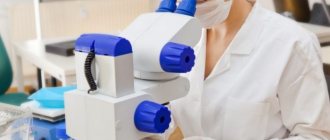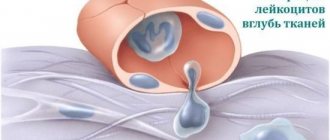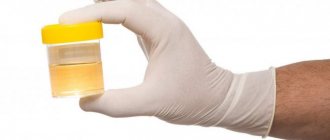Increasing white blood cell growth through diet
When white blood cells drop sharply after chemotherapy, they resort to any acceptable measures, just to quickly strengthen the immune system. What to do in such a situation? How to quickly restore immunity? If you do not increase the number of leukocytes in time, infection or virus will lead to a worsening of the condition.
To increase white blood cells at home, you should pay attention to the following recommendations from doctors:
- The diet after chemotherapy should be rich in vegetables, fruits and berries. Red and orange fruits will help maximize the number of leukocytes: tomatoes, red bell peppers, red currants, pomegranate, pumpkin.
- To raise white blood cells, it is good to eat protein foods. It is better if it is chicken and fish. Prepare light broths or soups from meat. Also introduce shrimp, seaweed, and mussels into the diet.
- A good increase in white blood cells can be achieved with the help of walnuts. Doctors recommend eating several pieces a day.
- Buckwheat porridge is a storehouse of vitamins, so it can be consumed in the morning. And you don't have to cook it. Just rinse and pour either kefir or warm milk. It should sit and swell overnight. In the morning you can eat ready-made porridge. Add fruit and honey if desired.
- The diet of a person who suffers from low white blood cells should include fermented milk products and red varieties of fish.
- Drink vegetable and fruit juices throughout the day. Freshly squeezed, not packaged. High efficiency in terms of increasing leukocytes was observed in carrot, beetroot and pomegranate juice. Natural pomegranate juice is diluted with water in a ratio of 1:2.
Advice! Beetroot juice must be prepared correctly so that it retains the maximum amount of nutrients. To prepare, grate the beets on a fine grater and add 1-2 teaspoons of sugar. Stir and set aside for 6-8 hours to allow the juice to separate better. Then squeeze out the juice through cheesecloth. Drink 10 ml three times a day after the main meal.
- If you notice a low level of leukocytes, then start every morning with a glass of water and 20 ml of natural honey. It can be diluted in water or simply washed down.
- Some doctors allow drinking dry red wine in small quantities, as it promotes the active production of leukocytes.
- Pay special attention to water. Drink at least 2 liters of plain water per day. It is better that it is cleaned with a filter or boiled. You can also include green tea, compotes, juices and berry fruit drinks.
- If leukocytes are low, avoid fatty, fried, spicy and salty foods. Canned foods, sausages and smoked products, and animal fats negatively affect human health during this period. Sweets and baked goods reduce leukocytes.
These are basic recommendations for chemotherapy. The fall in leukocyte levels begins after the first administration of the drugs, so you need to monitor your diet all the time.
Examples of diets to increase white blood cells
To know how to increase the level of white blood cells through proper nutrition, you need to radically reconsider your diet. The diet should consist of protein foods, vegetables, fruits, berries, and complex carbohydrates.

Examples of a daily menu for 3 days:
- Breakfast – buckwheat porridge in lightly salted water, vegetable salad. 2nd breakfast – a glass of carrot juice (freshly squeezed). Lunch – chicken broth, a piece of baked red fish with herbs, vegetables. Afternoon snack – curd with berries. Dinner – steamed chicken cutlet, sandwich with red caviar, green tea.
- Breakfast – 2 boiled eggs, whole grain toast, lettuce, vegetables of your choice. 2nd breakfast – 2-3 walnuts. Lunch – vegetable stew with pieces of beef, a glass of fruit juice, 2 slices of whole grain bread. Afternoon snack – a glass of kefir. Dinner – baked fish with vegetables, tea.
- Breakfast – oatmeal with dried fruits, cocoa. 2nd breakfast – vegetable salad. Lunch – buckwheat porridge with baked veal tenderloin, vegetable salad. Afternoon snack – cottage cheese with berries and honey. Dinner – rice with boiled chicken, carrot juice.
The attending physician should tell the patient how to increase the level of leukocyte cells so that the effect is maximum. Be sure to avoid smoking, abuse of alcohol and energy drinks.
What medications promote the growth of white blood cells?
How to increase white blood cell production with foods? The answer to this question is ambiguous. The products are only an addition to the rehabilitation base. Often it is medications that help normalize white blood cells after chemotherapy. The dose of active substances in the preparations is much higher, which is important for the growth of leukocytes.
Attention! Self-medication with a low leukocyte count is strictly contraindicated. Any use of chemotherapy is prescribed by a doctor. Additional medications during the rehabilitation process should be discussed with the oncologist.
Doctors have divided drugs that promote the growth of leukocytes into two types: gentle and highly effective. The first type of drugs is prescribed at the final stages of rehabilitation. These include:
- Polyoxidonium. Has an immunostimulating effect. Produced as a vaginal and rectal product. The main task of the drug is to stimulate blood cells to form antibodies. Removes toxic elements, lipids, has antioxidant properties. Contraindicated for pregnant and lactating women, people with renal failure. The price varies between 800 rubles.
- Imunofal. It is produced in the form of a spray or solution. Provokes rapid cell restoration, increases the body's protective function, normalizes the body's redox reactions, and removes toxins. The drug should not be taken by children under 2 years of age and pregnant women. The price on the Russian market fluctuates around 500 rubles.
What should you avoid?
In addition to including foods from the above groups in the diet, it is also necessary to ensure the exclusion of foods that cause a decrease in white blood cells. These include:
- duck meat, beef, broilers, partridge;
- liver of various animals and fish - despite the abundant iron content and beneficial effects on the cardiovascular system, excessive consumption of liver has a negative effect on the level of white blood cells. In addition, the liver acts as a filter and only the liver of an animal raised on natural feed in an ecologically clean area can be eaten;
- alcohol - despite the fact that cognac and dry red wine in limited quantities can have a beneficial effect on the cardiovascular system, excessive amounts of it nullify all efforts to improve health;
- sweets, baked goods - sugar has an extremely negative effect on the overall picture of blood composition;
- other foods high in carbohydrates.
It is also worth giving up fast food, excessively fatty and salty foods. You should also not eat meat from animals and birds raised with artificial feed additives.
They need urgent help
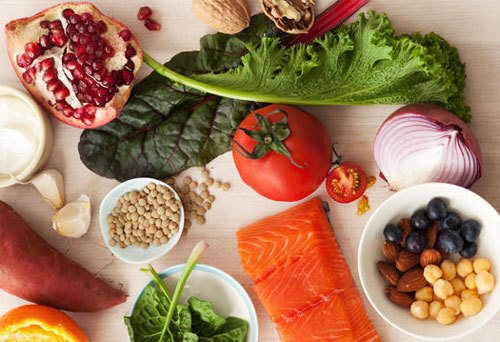
Chemotherapy exposes the body to enormous stress. It significantly affects the circulatory system and actually changes the formula and structural composition of the blood. The number of leukocytes and hemoglobin decreases. These changes lead to a sharp decrease in immunity. The patient becomes more susceptible to infections than usual. The patient feels general weakness and gets tired quickly.
That is why after chemotherapy it is necessary to seriously increase hemoglobin and leukocytes in the blood. How to do this?
We increase leukocytes
If you choose the path of drug-induced increase in leukocytes, then you should pay attention to the following list of drugs that are usually prescribed for these purposes after chemotherapy: granacite, neupogen, which belong to the group of strong drugs. Leukogen is considered a less powerful drug.
And gentle drugs include imunofal and polyoxidonium.
Attention!!! We provide this list of drugs in this article so that you understand the purpose of the drug prescribed to you by your doctor! Under no circumstances should you “prescribe” these medications for yourself! Self-medication is extremely dangerous!
However, in addition to tablets and drops, it is possible to help the body through nutritional correction.
To raise white blood cells, you need to eat mussels, chicken and beef broths, vegetables, stewed or baked fish, beets, carrots, pumpkin and zucchini.
A simple dish: buckwheat with kefir (in the evening the cereal is poured, and in the morning it is ready to eat) – it very effectively increases white blood cells, it is useful for everyone who has undergone a course of chemotherapy.
Honey, as people say, contains the entire periodic table and is very useful in principle. Therefore, if you are not allergic to it, we highly recommend consuming it before meals; 40-60 grams is quite enough.
Consume a tablespoon of sprouted chicory and lentils twice a day and this will also significantly help the body and increase its immunity.
Among the delicacies, red fish and caviar, as well as light red wine in small quantities, will help improve blood composition and increase the body’s resistance. Experts recommend eating red vegetables, berries and fruits. For example, apples, currants, peppers, beets, etc.
A decoction of barley has literally miraculous properties. It is prepared like this: take one and a half glasses of grain for 2 liters of water. The broth is brought to a boil. Then let it bubble over low heat until the water has evaporated by 50%. The decoction is ready. It should be taken 3 times 50 ml during the day. The broth will only become more healing if you add honey or a little sea salt to it.
Nutrition for leukemia
Leukemia is a type of bone marrow cancer that limits the production of red and white blood cells. Eating a balanced diet during and after cancer treatment can help you feel better, stay strong, and speed up your recovery.
During treatment, try to avoid weight loss or gain. Weight loss often reduces energy levels and reduces the body's ability to fight infection, so a strict diet is not recommended.
Advice! Eat small, frequent meals 5-6 times a day every three hours. This method will provide the body with enough calories, proteins and nutrients. Small portions will also help reduce treatment-related side effects such as nausea.
Choose foods rich in protein. Protein helps the body repair cells in tissue. It also helps the immune system recover after illness. Include a source of lean protein in all meals and snacks.
Main sources of lean protein:
- eggs;
- beans;
- soy products;
- nuts and nut oils;
- lean meat: chicken, fish or turkey;
- low-fat dairy products: milk, yogurt, cheese or milk substitutes.
Whole grains are also recommended. It is a good source of carbohydrates and fiber, which help maintain your energy levels.
Recommended Whole Grain Foods:
- oatmeal;
- brown rice;
- whole wheat bread;
- whole grain pasta.
Below are 5 tips for increasing your quality of life during illness:
Eat fruits and vegetables every day as they supply the body with antioxidants. Choose brightly colored fruits and vegetables to get the most benefits. Try to eat at least 5 servings of fruits and vegetables per day. Limit sweets in your diet. Foods high in sugar are not beneficial. Drink enough fluids
This is important to prevent dehydration. Avoid drinking caffeinated drinks. Maintain hygiene
Wash your hands frequently before preparing food. Use different knives and cutting boards for raw meats and raw vegetables. Cook food to the desired temperature. Avoid alcohol. Alcoholic drinks contribute to dehydration and reduce immunity.
On a note! As treatment progresses, side effects often occur that affect your ability to follow the advice outlined above. If loss of appetite, nausea, diarrhea, vomiting or other nutritional problems occur, your body's needs may change.
Recovery of the body after chemotherapy procedure
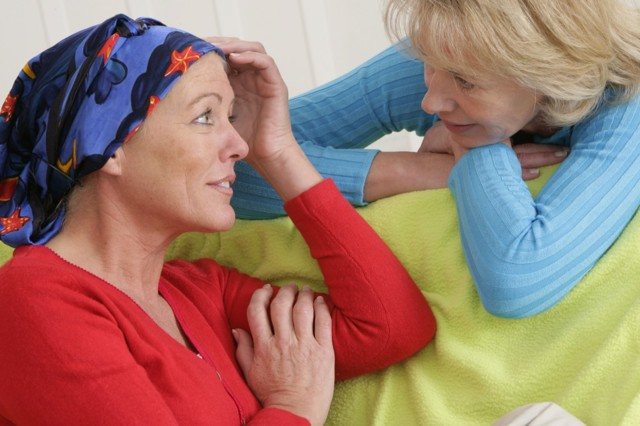
Chemotherapy is one of the main methods of treating cancer, which involves the administration of potent drugs. The substances contained in these drugs harm both cancer and healthy cells, causing a number of side effects. This is why it is so important to carry out rehabilitation after chemotherapy.
Chemotherapy has a negative effect on the entire body, the patient feels weak, loses appetite, and gets tired quickly.
Side effects of chemotherapy
Chemotherapy affects appearance: the condition of the skin and nails worsens, hair may begin to fall out, and the composition of the blood changes.
Recovery after chemotherapy is necessary for one reason: drugs that kill tumor cells slow down regeneration processes throughout the body and cause anemia. The result is that the body weakens, immunity decreases, and the person’s general condition worsens.
Blood composition also changes after chemotherapy. Most often, anemia occurs: the total volume of leukocytes decreases, which leads to weakness, fatigue, and dizziness.
White blood cells in the blood after chemotherapy begin to recover immediately, but this process can take from several weeks to several months. Some side effects from, for example, kidneys, liver, reproductive organs, persist for years.
Traditional methods of recovery after chemotherapy
You can speed up the body's recovery after chemotherapy using classical medicine. Upon discharge, the doctor will advise you to follow a diet and bed rest, drink vitamins, breathe fresh air, and use special hair strengthening products.
If side effects threaten the patient's life, inpatient treatment is prescribed - after chemotherapy, the patient is transferred to a rehabilitation department or center. Here they regularly take tests, monitor your condition, and prescribe medications intravenously. This treatment differs little from outpatient treatment, but provides more opportunities for the attending physician.
Unfortunately, there are no effective means of rehabilitation in classical medicine. The only thing doctors can do is to relieve symptoms, save lives if necessary, and maintain the patient's body at an acceptable level until full recovery.
Restoring the body after chemotherapy using stem cells
Stem cells are a powerful tool in the hands of doctors, with which they can improve a patient’s condition in a minimal amount of time.
Due to their pluripotency (the ability to reproduce cells of any tissue of the human body when dividing), implanted stem cells seem to trigger a mechanism for increasing the number of a person’s own cells. They (begin to grow and) lead to:
- restoration of leukocyte levels in the blood after chemotherapy;
- strengthening the immune system;
- improving the condition and function of tissues and organs.
Restoring blood after chemotherapy is the most important task, and stem cells do an excellent job of it. As a result, the body recovers much faster, the patient begins to feel much better, and the appearance of the skin and hair improves.
Review of other methods
Often, normalizing nutrition and including essential substances in the diet is not enough to maintain white blood cell levels. In this case, depending on the individual situation and at the discretion of the treating specialist, additional measures may be prescribed:
Drug treatment
Drug treatment is carried out using various methods, using various types of drugs, and is usually used when there is a significant lack of leukocytes and an urgent need to increase their content.
The action of some drugs is aimed at stimulating the production of substances necessary for the formation of leukocytes directly in the cell, while others trigger processes in the bone marrow. Only a doctor should make a decision about the possibility and necessity of taking drugs of both groups.
Health-improving physical activity
Health-improving physical activity, including in the fresh air, is prescribed as a support for therapeutic effects, promotes better absorption of nutrients, and improves body tone.
By playing sports and saturating the body with oxygen, the body’s ability to resist diseases increases and the immune system is strengthened.
Your doctor should give specific instructions on recommended exercise, frequency and duration of physical activity.
ethnoscience
Often, to increase the number of leukocytes in the blood, they resort to traditional medicine methods.
There are certain techniques that really help normalize the level of leukocytes. However, a decision on the possibility and necessity of their use must be made only with the consent of the doctor.
They take mumiyo, honey and other bee products for medicinal purposes. In addition, the consumption of various infusions and decoctions (for example, from oats, wormwood, chamomile, etc.) can have a positive effect.
Traditional medicine methods should not be used as the only treatment, but they can be used to strengthen and maintain the therapeutic effect.
How to quickly increase leukocytes in the blood after chemotherapy, foods, drugs, medications
The Yusupov Hospital employs experienced oncologists who know how to raise the level of leukocytes in the blood before and after chemotherapy. We use modern drugs to increase leukocytes in the blood before and after chemotherapy.
If necessary, treatment in a hospital is possible, where comfortable conditions for patients’ stay are created. Our specialists will conduct the necessary research using modern equipment from the world's best manufacturers.
Causes and signs of decreased leukocyte levels
A decrease in the level of white blood cells, or “leukopenia,” occurs for various reasons:
- toxic effects of chemotherapy drugs;
- deficiency of substances affecting the production of leukocytes (leukopoiesis);
- bone marrow dysfunction;
- the presence of malignant neoplasms;
- radiation exposure, etc.
As a result of leukopenia, patients note severe weakness, fever and chills, increased body temperature, and infectious diseases.
If leukopenia develops after chemotherapy, it may manifest itself with the following symptoms:
- increase in body temperature
- severe weakness
- chills, fever
- diarrhea;
- stomatitis;
- swelling of the oral mucosa.
On what day do white blood cells drop after chemotherapy? Typically, signs of the disease appear 1-2 weeks after the start of treatment and go away on their own in the 4th week. A low level of white blood cells in women after chemotherapy can be caused by hormonal dysfunction or the use of contraceptives.
How to quickly increase white blood cells in the blood after chemotherapy?
The best medicine for raising white blood cells after chemotherapy is colony-stimulating factors (Neupogen, methyluracil, leukogen). These also include filgrastim, petoxyl, leukostim.
How to increase the level of leukocytes in the blood after chemotherapy using traditional therapy methods? Oncologists at the Yusupov Hospital advise not to take any independent steps aimed at treating leukopenia. Contact oncologists at the Yusupov Hospital - they will diagnose and prescribe effective treatment.
How can you increase leukocytes in the blood after chemotherapy?
Known products increase white blood cells in the blood after chemotherapy:
- fruits;
- vegetables;
- berries;
- meat broths (chicken, beef);
- buckwheat porridge;
- Red caviar;
- seafood;
- dairy products;
- fish;
- settled beet juice.
Nutrition with low leukocytes in the blood after chemotherapy should be five times full. The patient must stop smoking and drinking alcohol.
The following foods do not increase white blood cells in the blood after chemotherapy: animal fats, high-fat cheeses, sugar, salt, sweets, strong tea and coffee.
How to normalize values
Leukocytosis indicates the development of physiological or pathological changes in the body. In pregnant women, the level of white blood cells decreases on its own. If this is caused by a disease, the doctor prescribes harmless drugs to improve the condition. With a slight deviation from the norm, folk remedies help. To reduce white blood cells in the blood, you need to change your lifestyle and improve your diet. If any disease is present, elevated levels are reduced with medications.
Folk remedies
At home, you can normalize leukocytes in the blood using folk remedies. Horsetail is used, which contains silicon. It is necessary to make juice from this plant using a juicer and take 2-3 tbsp. before eating. You can make an infusion from dry herbs. For 1 glass of boiling water, take 1 tbsp. herbs. Leave for 40 minutes, add honey to taste and take 50 ml.
Another healing plant is linden. Pour 1 tbsp. dried flowers of the plant with 1 cup of boiling water. Boil over medium heat for 10 minutes, leave for another 5 minutes. Drink 2-3 glasses of decoction a day 30 minutes before meals. Both recipes are suitable for people who need to reduce the number of white blood cells due to colds.
Sloe tincture helps cleanse the blood and activate the body’s immune forces. Take 1 kg of berries and pour 2 liters of water. Crush the mixture and leave for 24 hours in a dark place. Simmer over low heat for 1 hour. Strain, cool, add natural honey. Take 50 ml half an hour before meals. The infusion helps improve the general condition of the body and effectively reduces the level of white cells of the immune system.
Another way is to prepare an infusion from strawberry, raspberry or birch leaves. Pour 3-4 tbsp. leaves with 3 cups of boiling water and leave for 3 hours. Drink half a glass before meals. Can be taken together with a medicine that lowers the number of white blood cells in the blood.
Lifestyle
To reduce white blood cells in the blood, you need to change your lifestyle. Often pathological changes begin to occur in the body against the background of smoking and frequent drinking. The following rules will help you stay healthy:
- sleep at least 8 hours;
- to live an active lifestyle;
- walk in the fresh air 1.5-2 hours a day;
- reduce stress levels;
- avoid overwork.
You need to drink a lot of water to improve metabolic processes and remove harmful substances from the body. To prevent an increase in this value in the blood in men and women, it is necessary to regularly check with a doctor.
Nutrition
Nutrition is one of the components of proper and effective treatment. Semi-finished products, sweet carbonated drinks, and confectionery products are excluded from the diet. You should not eat fatty, fried and spicy foods. Many people are interested in which foods lower or increase the level of white blood cells. The above foods and drinks negatively affect the condition of the blood and the entire body.
Preference should be given to fermented milk products, vegetables and fruits, and herbs. You can eat lean beef, rabbit, turkey, hard cheese, seaweed, black bread, fish and seafood. These foods are rich in B vitamins and other beneficial substances that will help reduce the level of white blood cells.
The diet includes foods that contain iron and folic acid. These are white cabbage, mushrooms, beans, peas, apples, dried fruits, liver, nuts. If the number of these cells is reduced in a child’s blood, it is necessary to feed him more protein foods of plant origin.
How to lower it with medication
Medicines combined with diet help lower white blood cells quickly. The treatment regimen is selected depending on the disease:
- depression and mental instability are corrected with the help of sedatives;
- allergies are treated with antihistamines;
- if parasites are present, antiparasitic medications are prescribed;
- pathologies caused by viruses are treated with antiviral drugs;
- Antibiotics are prescribed for infection.





